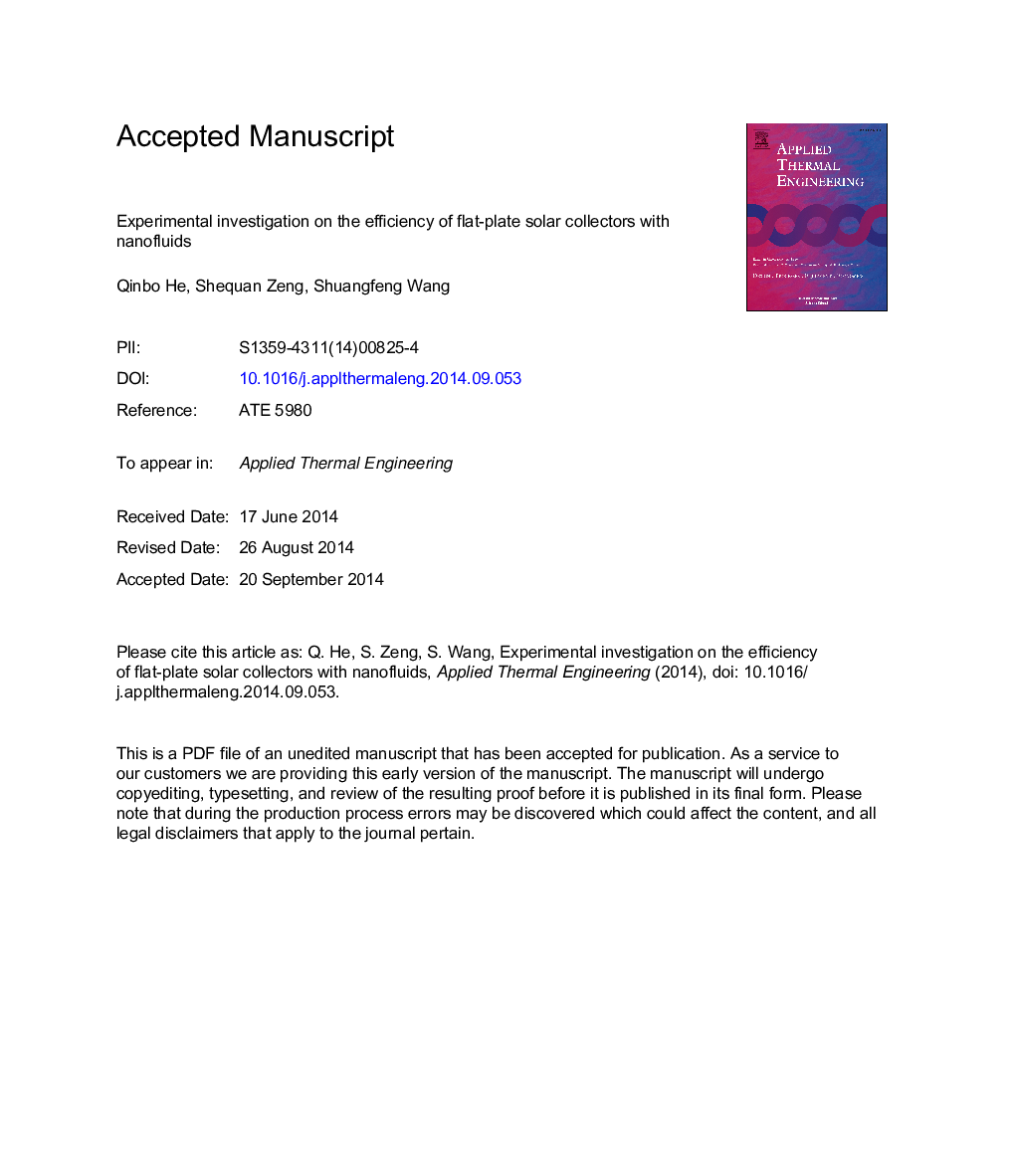| Article ID | Journal | Published Year | Pages | File Type |
|---|---|---|---|---|
| 645299 | Applied Thermal Engineering | 2015 | 34 Pages |
Abstract
In this study, Cu-H2O nanofluids with different mass fraction and size were prepared through two-step method. Its thermal conductivities and the effect of Cu-H2O nanofluids on the efficiency of a flat-plate solar collector was investigated experimentally. Meanwhile, the water temperature, heat gain of the flat-plate solar water heater and the frictional resistance coefficient of working fluid were also investigated. The mass flow rate of medium was 140Â L/h. The experimental results show that the thermal conductivities can be enhanced observably. The efficiency of solar collector was enhanced by 23.83% with using Cu-H2O nanofluids (25Â nm, 0.1Â wt%) as the absorbing medium. The efficiency of Cu-H2O nanofluids (25Â nm, 0.2Â wt%) is lower than that of Cu-H2O nanofluids (25Â nm, 0.1Â wt%). With the nanoparticle size increasing, the efficiency of solar collector decreased. The highest temperature and highest heat gain of water in the nanofluid (25Â nm, 0.1Â wt%) tank can be increased up to 12.24% and 24.52% compared with water tank, respectively. The increment rate of the frictional resistance coefficient is less than 1% in the whole working temperature area. From the results, it can be indicated that the Cu-H2O nanofluids is suitable for enhancing the efficiency of flat-plate solar collector.
Related Topics
Physical Sciences and Engineering
Chemical Engineering
Fluid Flow and Transfer Processes
Authors
Qinbo He, Shequan Zeng, Shuangfeng Wang,
